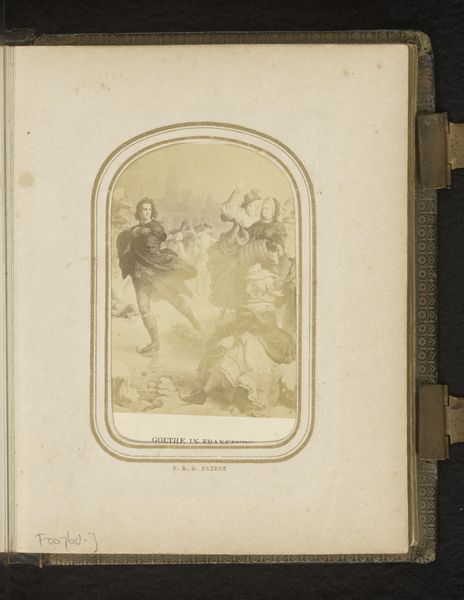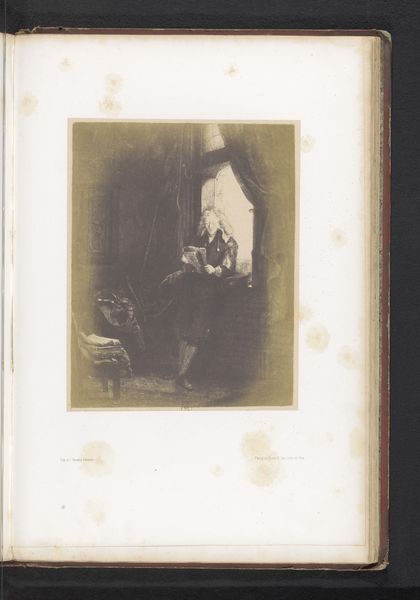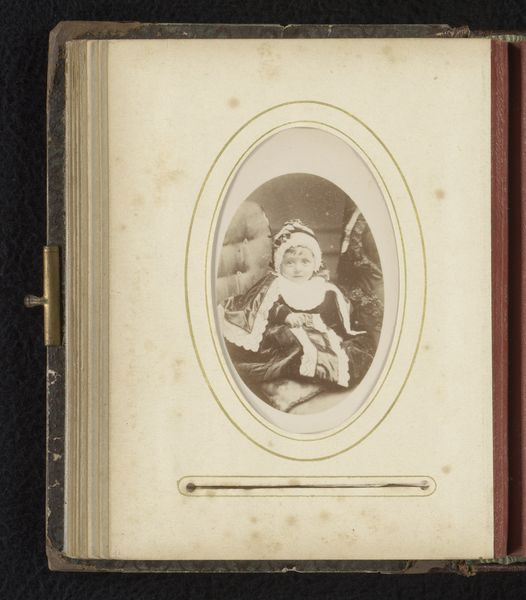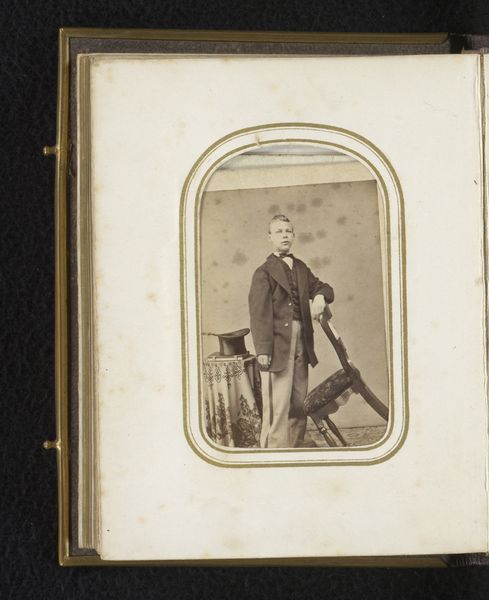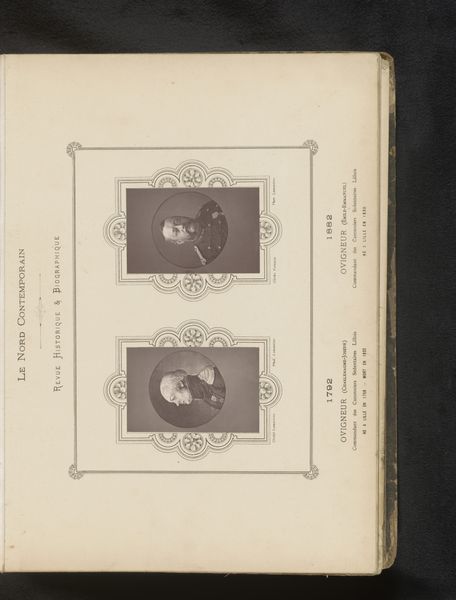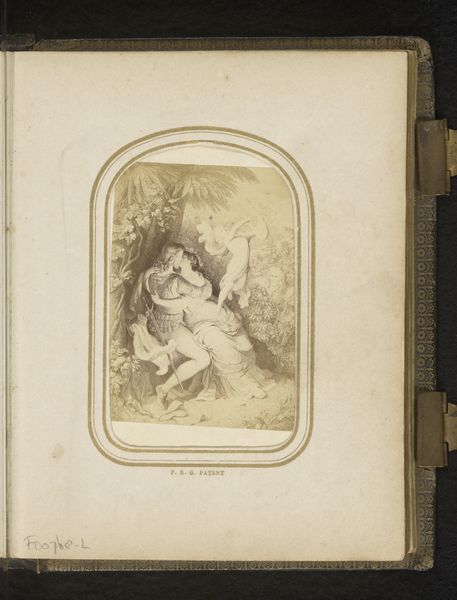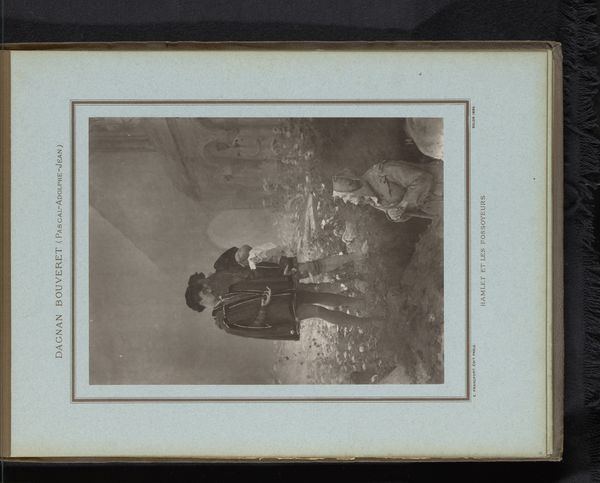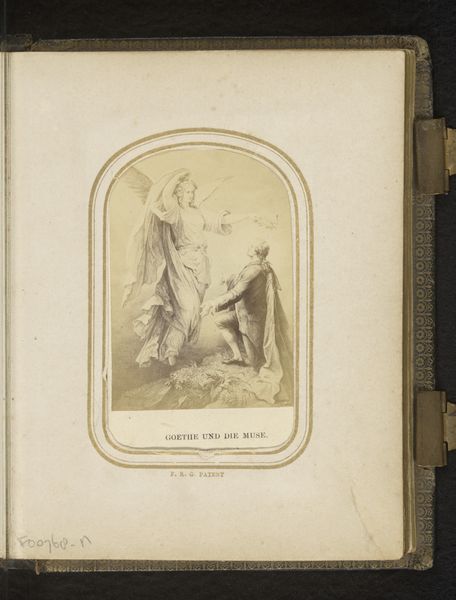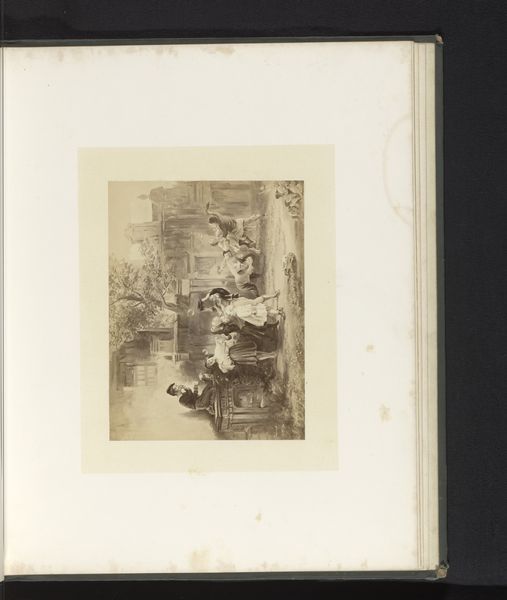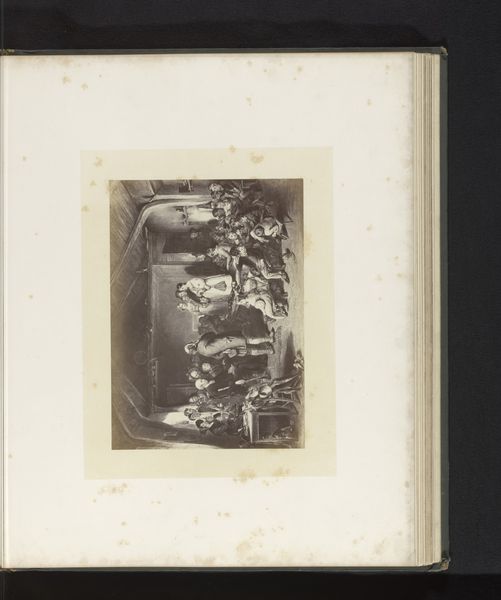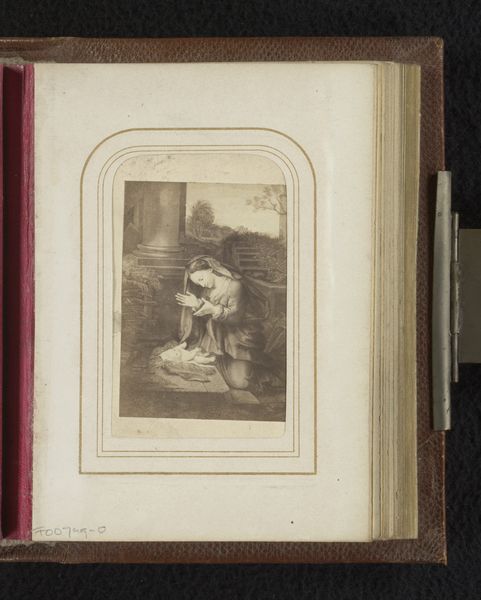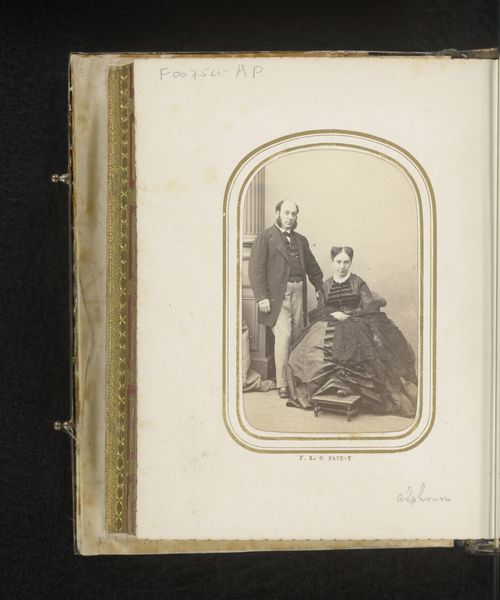
photography, gelatin-silver-print
#
portrait
#
still-life-photography
#
dutch-golden-age
#
ink paper printed
#
light coloured
#
white palette
#
photography
#
gelatin-silver-print
#
genre-painting
#
realism
Dimensions: height 85 mm, width 53 mm
Copyright: Rijks Museum: Open Domain
Curator: What strikes you first about this image? To me, it's the palpable sense of sorrow emanating from the scene. Editor: It's the sheer lack of luster. The gelatin-silver print, while providing a soft tonal range, almost flattens the scene, stripping it of vibrant detail and richness. Curator: This photograph is a reproduction of Jozef Israëls' painting "Les Orphelins," made sometime between 1870 and 1880. Israëls, a key figure in the Hague School, was known for his genre paintings depicting the lives of the poor and working class. He was highly praised during his time for rendering the stories of everyday people in empathetic terms. Editor: "Reproduction" is key. It begs the question of why photograph it at all. Was it to disseminate his imagery further? What does it tell us about photographic reproduction techniques that bring such intimate work into popular appeal? The photograph even captures the plate marks and edge of the photographic paper in the presentation. Curator: Indeed. The photograph provided broader accessibility to Israëls' poignant social commentary. The subject here -- an elderly man consoling two young orphans – reflects a common theme in Israëls' work: the hardship and resilience of the marginalized. Editor: And if you examine the light more, you note the single candle casting shadows everywhere in the home; It adds an immediacy to the grim conditions of his work as if this were how people lived every night and moment of their lives. Curator: Absolutely, the lighting emphasizes the vulnerability of the children. The social conditions portrayed were major concerns, prompting discussions around poverty and child welfare. Israëls was using the Dutch Golden Age's realistic portraits for political motivations. Editor: The transition from paint to photography itself altered the perceived value and distribution of social messages, no? What do we make of this mediated experience and the politics embedded within the materiality of art's new technological turn in its capacity to deliver important cultural and societal considerations? Curator: These sorts of photos allowed people to engage in social discussions and rally support. The visual language shaped public consciousness in the late 19th century. It shows us the ways photography can alter artistic and public engagement. Editor: So it shifted art from elite status to a far-reaching cultural commodity? And those implications require closer study. Curator: Exactly. The reproduction became part of social and cultural dialogues in that period. Editor: Definitely food for thought!
Comments
No comments
Be the first to comment and join the conversation on the ultimate creative platform.
